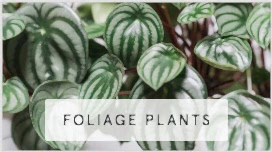Cold weather is no one’s friend, least of all your houseplants’. While the average indoor plant isn’t exactly susceptible to a chilly snap, things can happen when you least expect them. For example, a window left open accidentally could expose your beloved vegetation to cooler-than-desirable temperatures for extended periods. An example might be that you ordered a plant by mail, only to arrive home hours later to welcome it inside.
While you might be certain that the plant that’s been left in the cold is on its last legs before it even has a chance to thrive, the opposite may be true. It turns out that all hope isn’t lost if you’re dealing with a cold-beleaguered plant — the trick is to act quickly, so it has the best chance at survival. Here’s what to do if your houseplants happen to get too chilly for their own good.
Resolve Any Existing Problems
If the reason your houseplants get too cold regularly is that they’re frequently exposed to drafty windows, nip that problem in the bud right away by sealing off all doors and windows around the home. Otherwise, keep plants away from any windows that have cold panes or that have drafts seeping in. Avoid placing plants near frequently open doorways, too, as they could easily dry out and lose their luster.
Warm Them Up Promptly
When your indoor plant has been exposed to cold temperatures for an extended period, it’s crucial to act quickly and restore a sense of balance. The plant has the best chance at survival if you can move it to a warmer environment as soon as possible. Just opt for a space that’s the right temperature — don’t try to perform any repairs just yet, like snipping away weakened foliage. Allow the warmer temperature to do some of the preliminary work first but avoid placing the plant in a space that is too warm. Radiators and space heaters will only overheat it and lead to other problems.
Add Some Fresh Water
Once you’ve situated your cold houseplant in the right space, it’s time to get to work. Add some water to the soil, enough that it begins to seep out of the drainage holes at the bottom of the pot. This is a crucial part of the process since cold plants lose their moisture quite quickly. Since hydration is vital to a plants survival, your goal should be to restore water content as fast as possible. Don’t go overboard — there’s plenty of time to rehydrate a cold plant, but you should start with just enough to get the moisture flowing through the root system.
Check for Decaying Foliage
You might be tempted to get a head start on the repair process by adding some fresh fertilizer to the soil. Avoid doing this, as the plant’s tissues may not tolerate the exposure well. You can support a recovering houseplant by assessing the quality of the leaves after it’s been primed in a warm location for at least a month. Look for any signs of wilting, yellowing, or other abnormal aesthetic details that might affect the integrity of the plant with time. Snip away any dead foliage and spent flowers at this time. Avoid the temptation to take this step earlier. The recovery process takes time, and the more that you respect this phase, the more likely your houseplant will thrive — even if it appears that you need to trim away dead foliage far sooner. Let it be, and allow your plant to do its best work.
Consider Insulating Your Windows
You can take measures to avoid such problems in the future, too. The key is to check that your windows are properly insulated if you plan to keep plants near them. Ideally, they should be situated at least three inches away from the glass. If the windows are old, consider covering them in shrink wrap. This is especially important if the window in question is the one that provides the most optimal sunlight exposure. Remember that your plants need plenty of that, too!
Focus on Light Exposure
Given that the period of colder weather also correlates with darker skies, you might need to take additional measures to ensure that the plant receives an adequate amount of light exposure. Daylight hours are at a premium, and even when the sun shines, it’s simply not as intense at this time of the year. Take stock of where you plan to situate these plants but do your best to put anything that requires full sun exposure near a south- or west-facing window. If light exposure is an issue at this time of the year or in your home overall, you might consider using a grow light instead. You’ll need to increase the amount of time your plant receives light if this is the case, but this option fills the gap when exposure to the right amount of sunlight may be difficult.
Check the Temperature Regularly
The last thing you want is to further stress a plant that’s already been strained by the cold. You can support its wellbeing and promote a better environment for it simply by keeping an eye on the temperature in your home. The temperature shouldn’t fall below 65 degrees Fahrenheit, even if you suspect that your plant may fare just fine at a slightly lower temperature. Generally, houseplants perform best in spaces that replicate the comfort of a tropical environment. This equates to elevated humidity levels and moderate temperatures. Using a humidifier in the room is a big benefit, or you might consider installing a whole-home humidifier if your home’s air is particularly dry. Finally, do your best to minimize exposure to anything that’s at risk of leaving it too hot. For example, plants shouldn’t be situated near fireplaces, furnaces, or stoves.
With a little bit of TLC, you can help heal and nurture a houseplant that’s been exposed to cold air for too long. Be confident that with time and patience, your plant will look its best once again.













